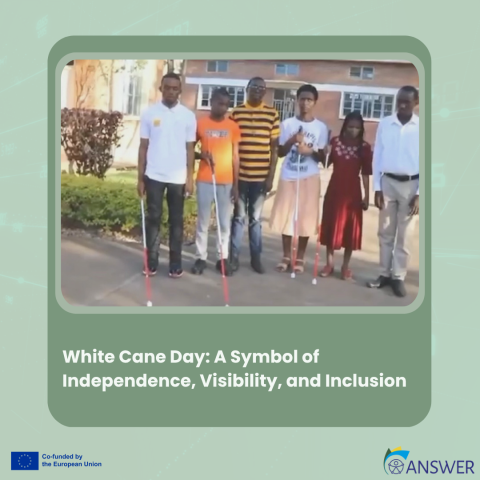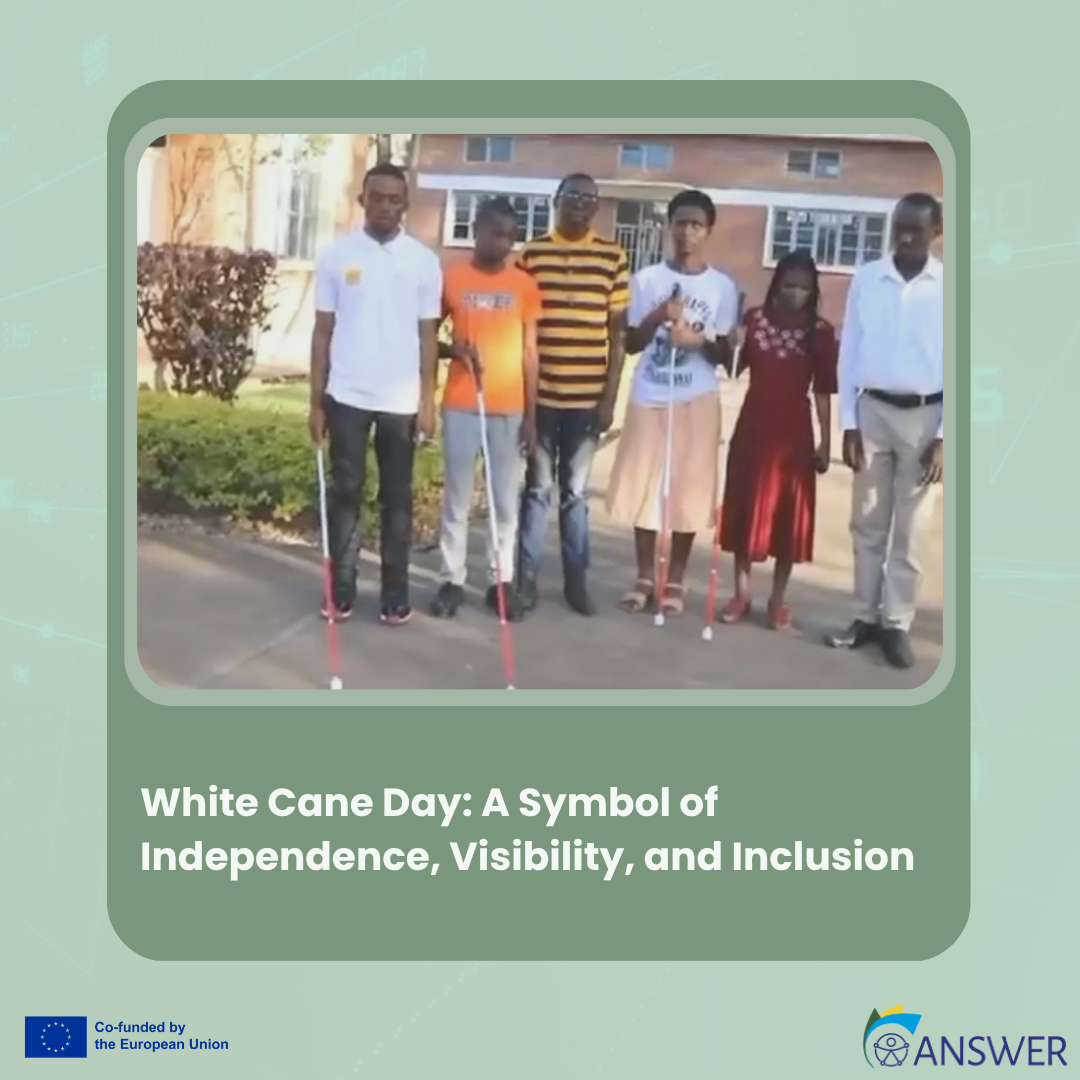
Every year on 15 October, the world celebrates White Cane Day — a date dedicated to recognizing the white cane as an essential tool that allows blind and visually impaired people to move safely and independently.
Within the ANSWER project – Advance Inclusion for Students with Disabilities in Higher Education in Rwanda, we join this commemoration with deep commitment. This day represents a powerful opportunity to reaffirm our dedication to inclusion, accessibility, and equal opportunities for all students — especially those with visual impairments.
🎯 Purpose and Objectives of White Cane Day
- Purpose: To celebrate the white cane as a tool that enables blind and visually impaired people to travel safely, promoting autonomy and independence.
- Objective: To raise awareness about visual disabilities, encourage empathy and respect, and foster inclusion across all areas of life.
- Relevance: It is a moment to reflect on the challenges and achievements of people with visual impairments, while promoting a society that values accessibility and inclusion for everyone.
🦯 The White Cane: More Than a Tool
The white cane serves a dual purpose:
- A practical tool for mobility — It helps users detect obstacles, curbs, or stairs and move safely in their environment.
- A symbol of visibility and respect — The white cane alerts others that the user is visually impaired, fostering awareness, caution, and understanding in public spaces.
Originally promoted by figures like Guilly d’Herbemont in the early 20th century, the white cane became a symbol of safety and dignity for people with visual impairments — a tool of empowerment and equality.
🤝 Connection with the ANSWER Project
The ANSWER project aims to build inclusive university environments in Rwanda by strengthening institutional capacities, staff skills, and awareness around disability inclusion.
White Cane Day connects closely to ANSWER’s goals:
- Promoting visibility and awareness of students with visual impairments within higher education.
- Supporting accessibility through assistive technologies, tactile maps, Braille signage, and barrier-free pathways.
- Encouraging inclusive training for both staff and students.
- Giving voice and leadership opportunities to visually impaired students to share their experiences and ideas for improvement.
By embracing this holistic approach, ANSWER reaffirms that true inclusion goes beyond removing physical barriers — it requires transforming attitudes and promoting a culture of empathy and solidarity.
🌍 Reflect and Act
On this White Cane Day, we invite everyone — students, educators, partners, and institutions — to:
- Learn more about the meaning of the white cane
- Organize awareness activities and demonstrations
- Check that campuses are accessible and safe for all
- Listen to the lived experiences of students with visual impairments
Because the white cane is not only a mobility aid — it is a beacon of independence, visibility, and inclusion.
In the picture, you can see visually impaired students from the Nyagatare campus of the University of Rwanda who have benefited from the ANSWER project, gaining inclusive access to higher education 🎓.
Don’t miss their inspiring stories ✨ in the video available on our YouTube channel!
▶️https://www.youtube.com/watch?v=Qj3HHBx8Z-s






